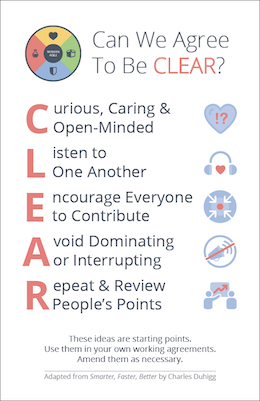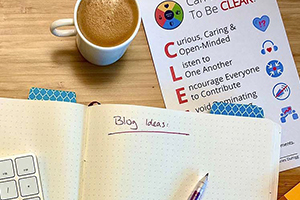My first foray into tech wasn’t just with people producing and delivering code, and it showed me just how much the collaboration skills for teams in IT are actually needed everywhere.
I also work with HR, marketing and sales teams. Often they first come to me because they see how product teams and engineers are working together and actually improving. They see and hear about what the teams are making - and it’s not just about getting things done quicker but getting the Right Things Done and actually seem to get along better and enjoy themselves!
And they often ask me:
“What are they doing differently?”
“How can WE do whatever it is they’re doing?”
What they’re looking for initially has nothing to do with the work itself, but really starts with a foundation of better behavior as a team.
If teams have 50% more productivity and 76% more engagement it’s not because they’ve found some newfangled way of doing Agile or any other framework.
It’s because they’re learning how to be genuine with each other. They’re unafraid to ask questions. They’ve likely done the work (and continue to do the work) of self-reflection to identify their own bad habits. This can look like recognizing when you’re having a bad day and simply verbalizing it to your team so they understand you’re not coming from a great place.
It can also look like someone starting to work on a project and then realizing they need help - and asking for it.
These things are easier said than done when we’re part of an ecosystem that uses fear as a weapon, or allows silence to become an accepted, frustrating norm.
Then it becomes a bit like an epidemic. Everyone suffers, you have endless meetings where no one really talks about real issues and it’s a never ending pit of despair!
Good times!
So, when I answer the question of what the team is doing differently, I often say this:
“They know each other better now, and how they want to work together.”
And while that isn’t EVERYTHING they’re doing differently, it’s absolutely one of their foundational keys to their success.
And it all starts with a Working Agreement.
I’m often amazed at how many folks outside of technology have never created one before, because I think it’s one of the most powerful tools you can use to really level up the way your team collaborates together.
Keys to a successful working agreement can look like:
- Talk about what’s important before creating one. Breaking into small groups on your team (even pairs) and talking about the top 5 things that’s important to each of you for how you show up together as a team. Maybe this looks like asking for help after you’re stuck on something for more than 1 day. Once the team comes back together, vote on them and talk about them.
- Keep it short. I try not to have more than 3-5 items on a Working Agreement so I can easily remember what they are.
- Keep it visible. This is harder when you’re remote, but you can pin a Working Agreement to a Slack channel or a Teams channel.
- Keep it relevant. If you have things on your Working Agreement that don’t matter anymore, ditch them and come up with something more valuable. Try to revisit the Working Agreement every 3 months to make sure it all still applies.
- Perhaps most importantly, come up with a plan for how you want to address folks when someone breaks an agreement. Because someone will, and that someone might be you. How do you want it brought up or approached?
One that we often use here at Industrial Logic as an example is our CLEAR poster.

What would you come up with for your team?
Working agreements can be an awesome way to level up the way you work with others, regardless of industry.
Whether you work in retail, for a hospital or in a restaurant and you want better collaboration, suggest creating one.
You’d be surprised at how much more clear things can become.




